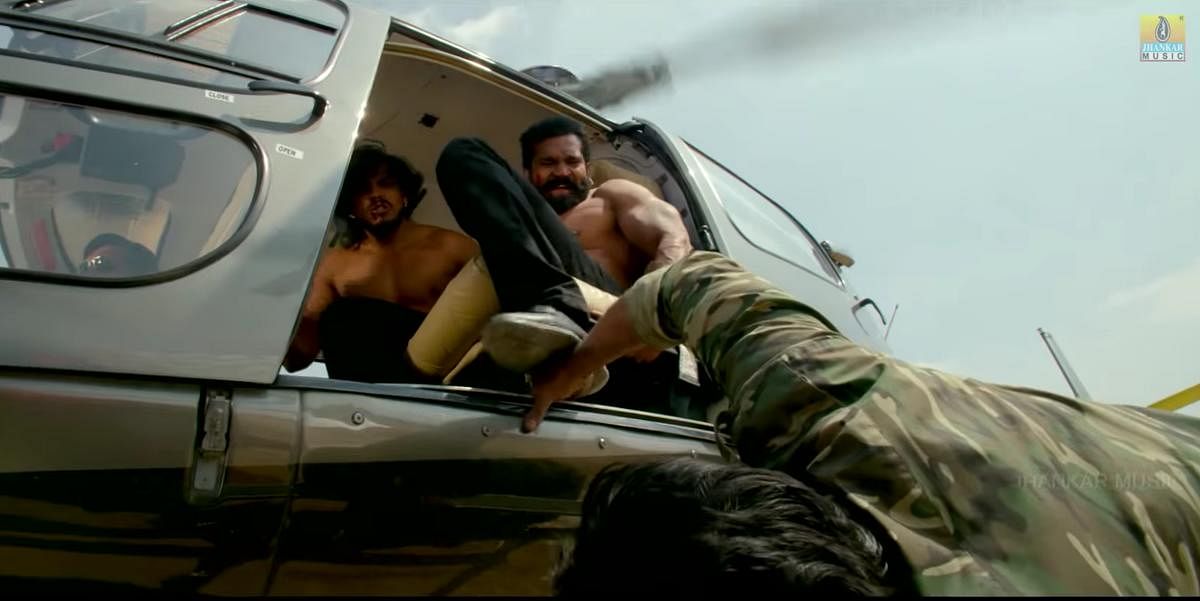
The tragedy on the sets of the Kannada film ‘Love You Rachu’ on Monday was yet another reminder of the dangers of being a stuntman. Vivek, the 35-year-old who died of electrocution during an action scene, was a fighter with dreams of becoming an action choreographer one day.
The incident brought back the horrors of the ‘Masthi Gudi’ mishap, in which two actors — Anil and Uday — drowned when they jumped from a helicopter into the Thippagondanahalli Reservoir in 2016. Poor planning and technical glitches led to the twin disasters.
The industry has minimised danger by following stricter norms in the last five years. But given the nature of the job, all it takes is one blunder to kill lives and dent the industry’s reputation.
Seasoned stuntmen feel more needs to be done to help the family members of the deceased. “The All Karnataka Cine Stunt Directors and Stunt Artistes Association has 236 members. Around 60 per cent of the association is insured. The association needs more funds to make sure all its members are insured,” Narasimhamurthy, stunt master and treasurer of the association, tells Showtime.
The members are insured for up to Rs 8 lakh in a 26-year-plan. “We deduct seven per cent from their salary for the policy amount. Stuntmen must receive more pay. Only then can we raise money for insurance. Right now, a helper receives Rs 2,200 and a fighter gets Rs 3,200 per day,” says Narasimhamurthy.
In case of an injury on the sets, most of the production houses provide on-the-spot treatment. If a stuntman is admitted to the hospital, he can claim a refund of the medical expenses from the association. Senior members of the association met on Thursday and decided to donate around Rs 6.5 lakh to Vivek’s family.
After the ‘Masthi Gudi’ incident, it became a must to have an ambulance and a doctor at the shooting spot, says Vikram Mor, action choreographer of ‘KGF: Chapter 1’ and ‘Avane Srimannarayana. “Big banners follow all the rules. In small-budget projects, it becomes difficult to hire an ambulance,” says Vikram, who gave Rs 1 lakh to Vivek’s family.
Stunt masters must avoid on-spot choreography, he says. “With the help of storyboards and discussion sessions, it is possible to plan an action scene properly before going for the shoot,” he explains.
Mass Madha, one of Sandalwood’s experienced action choreographers, believes in extensive rehearsal sessions. “These days, most of the producers pay for rehearsals. Practice helps to avoid on-spot mishaps,” says the action director of ‘The Villain’.
He adds that young stuntmen looking for shortcuts might land in trouble. “Earlier, the association would grant an official stunt director’s card to artistes with eight years of experience. Nowadays I see rookies getting the card. In such a risky profession, an amateur handling huge responsibility is dangerous,” he offers.
‘Producers aren’t responsible’
D R Jayaraj, president of the Karnataka Film Chamber of Commerce (KFCC), told Showtime the chamber is submitting revised guidelines for the chief minister's approval.
“We will have a meeting with the stunt union members. According to the reworked rules, the action director will have to give an undertaking that he or she is responsible for accidents on sets. A producer just funds the project. He or she is usually not on the sets. So it’s unfair to blame a producer for such accidents,” he said.
